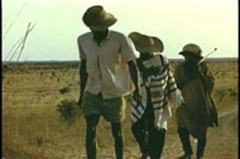The Oroqen
Oroqen means “people of the mountain.” China’s 6,000 Oroqen inhabit the Oroqen Autonomous Banner in the Greater and Lesser Hinggan Mountains of Inner Mongolia. Some live in Heilongjiang Province. Historically, the Oroqen were a nomadic people. The Oroqen love to dance and sing and have a repertoire of folk songs praising nature, love, hunting and the struggles of life. They…





